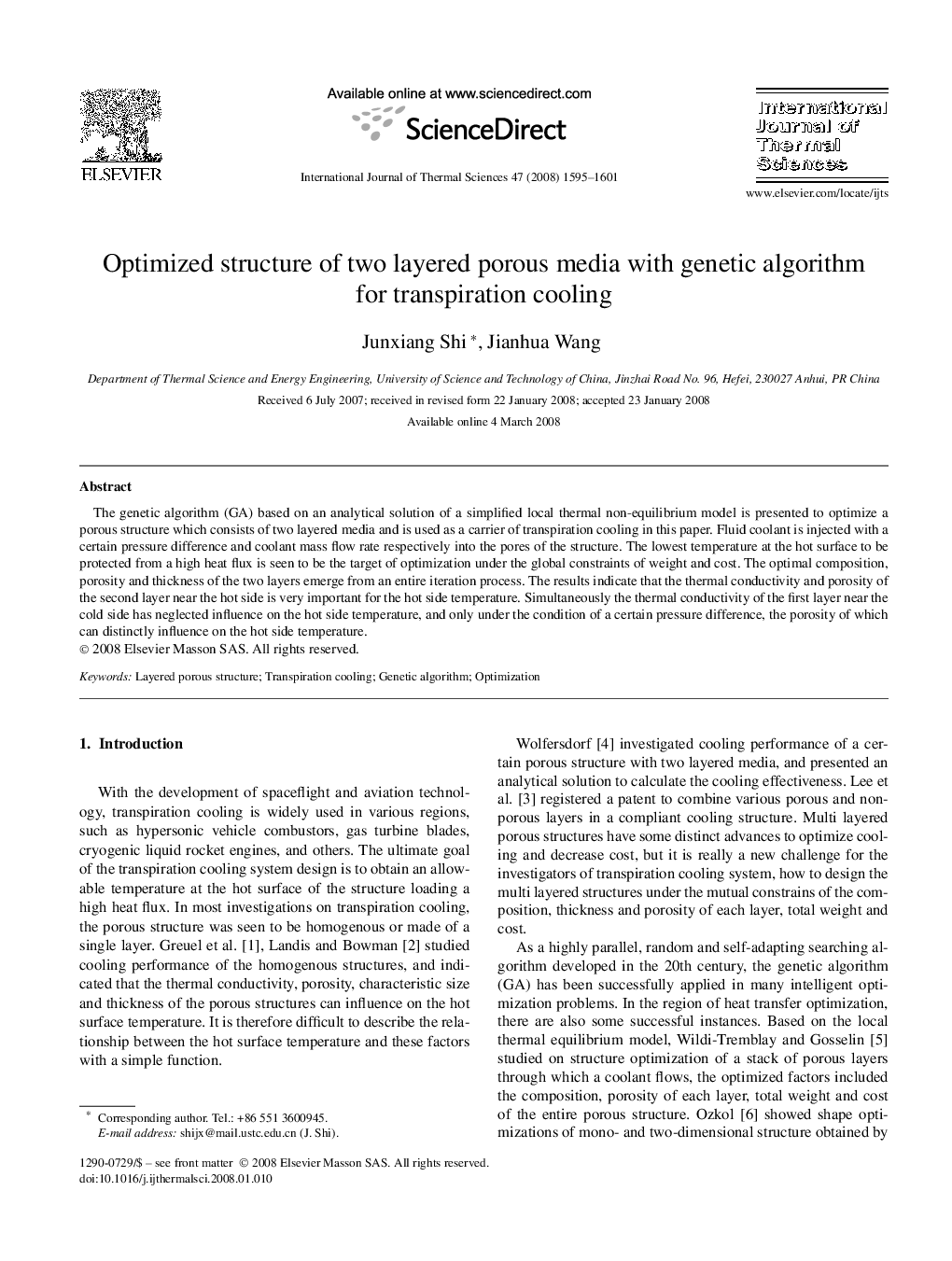| Article ID | Journal | Published Year | Pages | File Type |
|---|---|---|---|---|
| 669054 | International Journal of Thermal Sciences | 2008 | 7 Pages |
The genetic algorithm (GA) based on an analytical solution of a simplified local thermal non-equilibrium model is presented to optimize a porous structure which consists of two layered media and is used as a carrier of transpiration cooling in this paper. Fluid coolant is injected with a certain pressure difference and coolant mass flow rate respectively into the pores of the structure. The lowest temperature at the hot surface to be protected from a high heat flux is seen to be the target of optimization under the global constraints of weight and cost. The optimal composition, porosity and thickness of the two layers emerge from an entire iteration process. The results indicate that the thermal conductivity and porosity of the second layer near the hot side is very important for the hot side temperature. Simultaneously the thermal conductivity of the first layer near the cold side has neglected influence on the hot side temperature, and only under the condition of a certain pressure difference, the porosity of which can distinctly influence on the hot side temperature.
